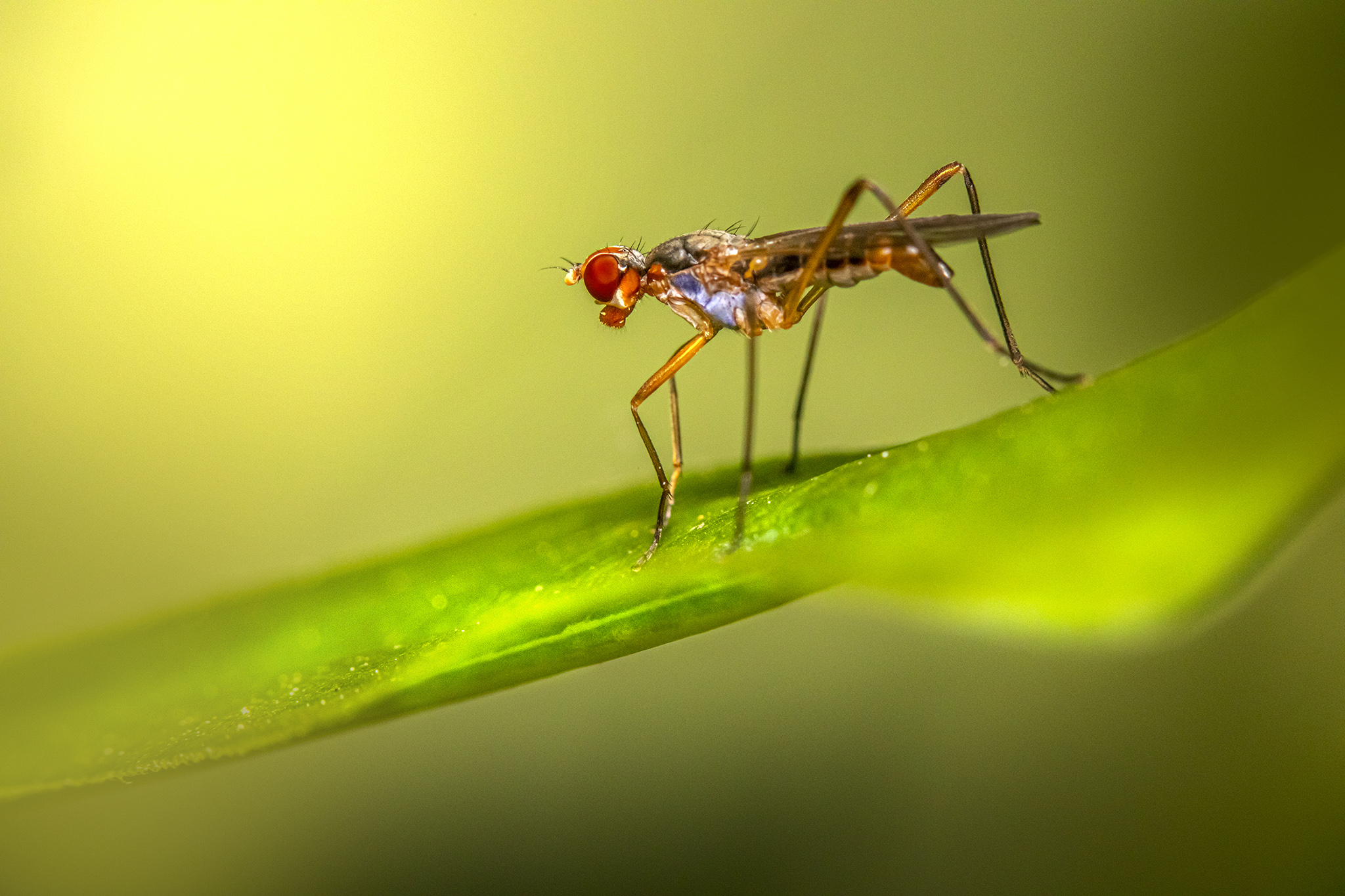Stilt-legged Fly (Micropeza corrigiolata) is a small, slender fly belonging to the family Micropezidae. These flies are named for their distinctive long, thin legs, particularly the middle and hind legs, which give them a stilt-like appearance. Here is a brief overview of the species:
Description
- Appearance: Micropeza corrigiolata is characterized by its elongated body, which is typically brown to dark brown with pale markings. The fly has long, slender legs, with the hind legs often being longer than the body, creating a “stilt-legged” look. The wings are narrow and transparent, sometimes with faint markings or veins.
- Size: This fly is relatively small, with a body length ranging from 5 to 7 mm.
- Distinctive Features: The long legs and thin body give the stilt-legged fly an almost spider-like appearance. They also have antennae that are relatively long for their body size.
Distribution and Habitat
- Geographical Range: Micropeza corrigiolata is found across much of Europe, including the British Isles, and parts of Asia. It is commonly seen in temperate regions.
- Preferred Habitats: These flies typically inhabit open areas such as grasslands, fields, meadows, and the edges of forests. They are often found near decaying plant material, which serves as a habitat for their larvae.
Behavior and Ecology
- Feeding: Adult stilt-legged flies are known to feed on decaying organic matter, honeydew, nectar, and sometimes the excrement of herbivores. They play a role in nutrient cycling by helping decompose plant and animal matter.
- Reproduction: The larvae of Micropeza corrigiolata are generally saprophagous, meaning they feed on decaying organic material. They are often found in rotting plant debris or soil rich in organic matter.
- Movement: These flies have a unique walking pattern, often bobbing up and down as they move, which helps to mimic spiders or predatory insects and can deter potential predators.
Interesting Facts
- Mimicry: Micropeza corrigiolata is known for its mimicry behavior. Its stilt-like legs and movement patterns can make it resemble a spider or an ant, providing protection from predators that may avoid eating spiders due to their venom or unpalatable nature.
- Behavior: Unlike many flies that rely heavily on flight, these flies are often seen walking on leaves or other surfaces, using their long legs to balance and explore their environment.
Importance in Ecosystem
- Role in Decomposition: As decomposers, stilt-legged flies help break down organic material, contributing to soil health and nutrient cycling. Their larvae, in particular, help decompose plant matter, aiding in ecosystem functioning.
- Prey Species: These flies also serve as prey for a variety of insectivorous animals, including birds, spiders, and other predatory insects.
While Micropeza corrigiolata may seem inconspicuous due to its small size, it plays a valuable role in maintaining the health of the ecosystems it inhabits. Its unique appearance and mimicry behavior make it an interesting example of insect adaptation.
Visited 162 times, 22 visit(s) today
Views: 282
Subscribe to the newsletter:
